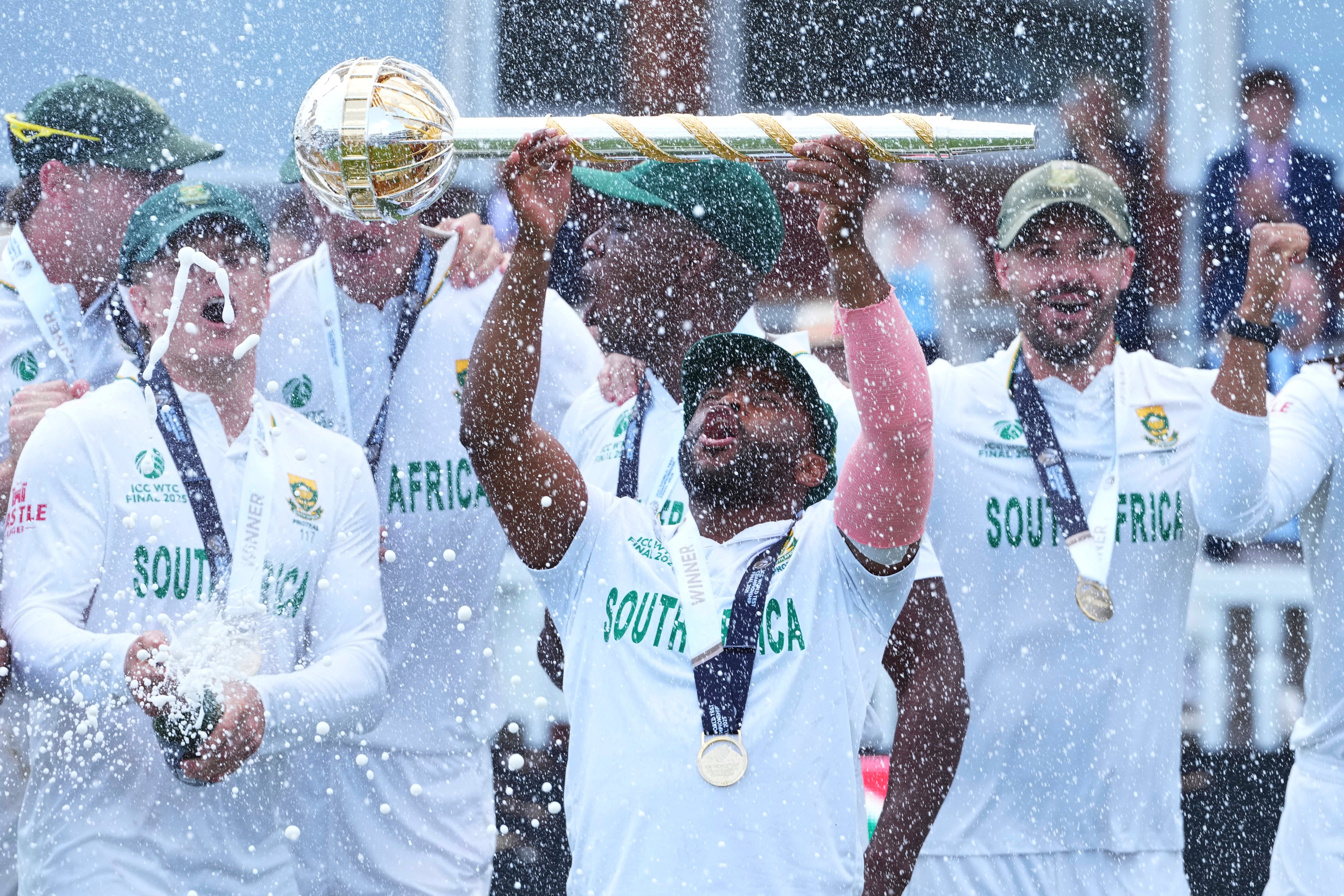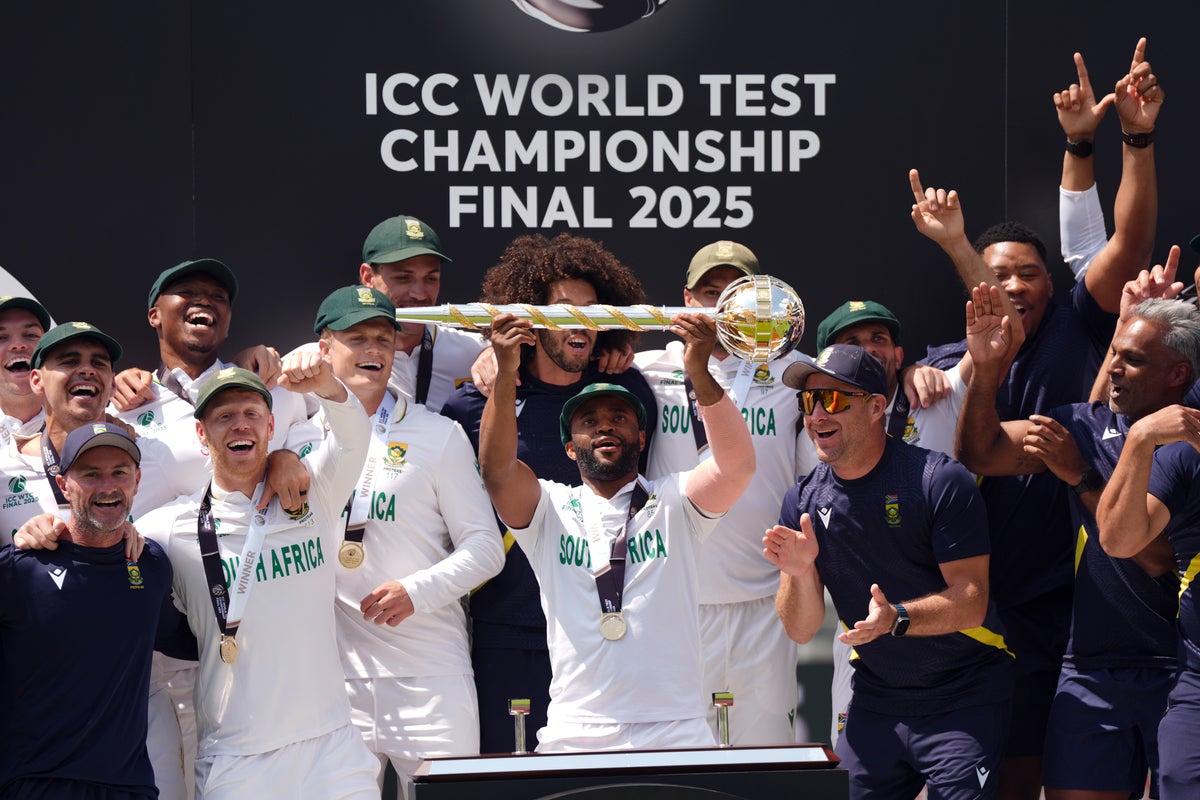Cradling the Test mace, soaking up the sweet taste of success, Temba Bavuma perhaps took a moment to reflect on a long and unlikely journey to the top of the world. Many a great South African captain had tried and failed to lead their side to this sort of triumph, many a team of top talents falling short, the Protea name becoming a byword for blunders with the line in sight.
And so it took the lad from Langa, all of five-foot-four in his spikes but a towering figure in so many senses, to overcome the derision and doubters to lead the Rainbow Nation to unlikely cricketing glory. While his tale is well told, it is worth reflecting again on the barriers Bavuma had to overcome. When he was first picked, certain sections of South Africa suggested a Black batter had been selected only due to transformation targets; after cementing himself in the side and earning an elevation, they questioned his captaincy. The critics are quieter now.

For this victory is a story of resilience and breaking barriers, both personally and for the team. It is impossible to disentangle the story of South African cricket from matters of race, not least due to the 22-year isolation under the apartheid regime. Further back, their first series against Australia in 1902 featured a standout performance from Charlie “Buck” Llewellyn, the first non-white South African Test cricketer – there would not be another until 1992. Until Bavuma’s breakthrough hundred in Cape Town in 2016, no Black player had ever made a century for South Africa.
But a team broadly drawn and led superbly by their captain, who averages nigh on 50 in the last five years, are Test champions of the world against all odds. There were plenty of detractors and doubters who felt it unfair that South Africa had played a softer schedule on their way to this final, but over three-and-a-bit days, they have proved themselves worthy winners.

“I think this team’s greatest strength is its unity,” batting coach Ashwell Prince said after day three. “They are well aware that South Africa have had much greater individual players, but there is something special going on in our dressing room.
“If I’m honest, there was no talk about proving anybody wrong. There was a lot of talk about our route to the final, who we played against, and people have their opinions about that. We’d love to play against everybody more often – especially if there are big-money series where we can make some money.”
Prince’s words felt important, because beyond the triumph lies cause for concern. This showpiece occasion displayed the best of Test cricket, and yet there will be no triumphant homecoming scheduled for the champions, with no home five-day fixture scheduled for South Africa’s men in their upcoming summer. It is little more than a year since Dean Elgar, Bavuma’s predecessor as skipper, retired from his favourite format citing a lack of fixtures.

Changes may be on the way to a World Test Championship that has brought certain benefits in contextualising long-form cricket but just as many headaches and headlines. At launch, the concept of the final was controversial, yet it has been a welcome addition, heightening the stakes and each time producing a compelling contest.
It is thought that the game is set to remain in England for the next few editions. Lord’s has felt an appropriate venue for the fixture given its history and prestige, and has looked resplendent with close to capacity crowds and the sun beating down. Aided by immigration, the sheer interest in Test cricket in London ensures that tickets will be snapped up almost regardless of who is involved – and the South African diaspora were in great voice throughout the final.
Get 4 months free with ExpressVPN
Servers in 105 Countries
Superior Speeds
Works on all your devices
Try for free
ADVERTISEMENT. If you sign up to this service we will earn commission. This revenue helps to fund journalism across The Independent.
Get 4 months free with ExpressVPN
Servers in 105 Countries
Superior Speeds
Works on all your devices
Try for free
ADVERTISEMENT. If you sign up to this service we will earn commission. This revenue helps to fund journalism across The Independent.

There will understandably be a temptation to take it to the giant Narendra Modi Stadium in Ahmedabad, given India’s power within the game and population, but the swathes of empty seats that this game might have been played to there would not have been a great look. The Pakistan issue would pose another problem.
The final’s position in the calendar may need some thought, though, following as it does the big block of white-ball cricket caused by the IPL. Both South Africa and Australia’s batters looked lacking in preparation in the first innings particularly, with no real time to groove their techniques against the moving red ball. Indeed, the final reflected a trend more broadly of faster, more frantic Tests. 2024 was the year with the lowest bowling strike rate of any in the longest format since 1907 – though run rates are generally on the rise, too.
Within that, though, may be an answer to some of the issues bedevilling Test cricket. Four-day encounters remain rarities within the schedule, but with fewer and fewer encounters extending to a full 15 sessions, there is surely an argument to explore the possibility of contracting slightly. When accounting for a slight reduction in rest between Tests, a three-match series made up of games comprised of four days could be squeezed in significantly quicker than those held over five.
It will perhaps feel anathema for the purists to reduce the ebb and flow that makes this game so engaging, but a look at the landscape shows that something must be done. There has not been a single three-match Test series not involving at least one of England, Australia and India since 2019, a preference for short and sharp series not allowing narratives to build. In that sense, three times four is surely better than two times five.

Fears over the competitive fairness in the World Test Championship are somewhat undermined by the convolution that already exists, with nations not playing identical schedules and contesting series of different lengths. Some would suggest that such a condensing could lead to a predominance of draws, yet such dispiriting results have been all but eroded from the game as currently constructed – and the increased time pressures could lead to bolder captaincy to add yet more tactical complexity.
The other option, of course, would be a fairer sharing of the revenue, but the economic heft that India provides the game somewhat understandably sees it hoard much of its wealth. It does feel slightly jarring to see the gaudy sums on offer in franchise cricket, though, when nations like Ireland are unable to schedule the Test cricket they need to develop due to financial concerns. The idea of two divisions will not go away – it will be controversial, but should it provide the fixtures that smaller nations need, there are worse ideas. One would not have confidence that the necessary scheduling safeguards would be in place in such a scenario.
But there is clearly something to savour and take solace in here. The final progressed at breakneck speed for two days and evidently mattered much – every ball an event, the themes and throughlines evident. Test cricket has been fortunate for figures like Pat Cummins, Ben Stokes, Kagiso Rabada, Virat Kohli and others for championing it through word and deed. And the sight of Bavuma clutching the ultimate prize at Lord’s is an image that deserves to endure.



